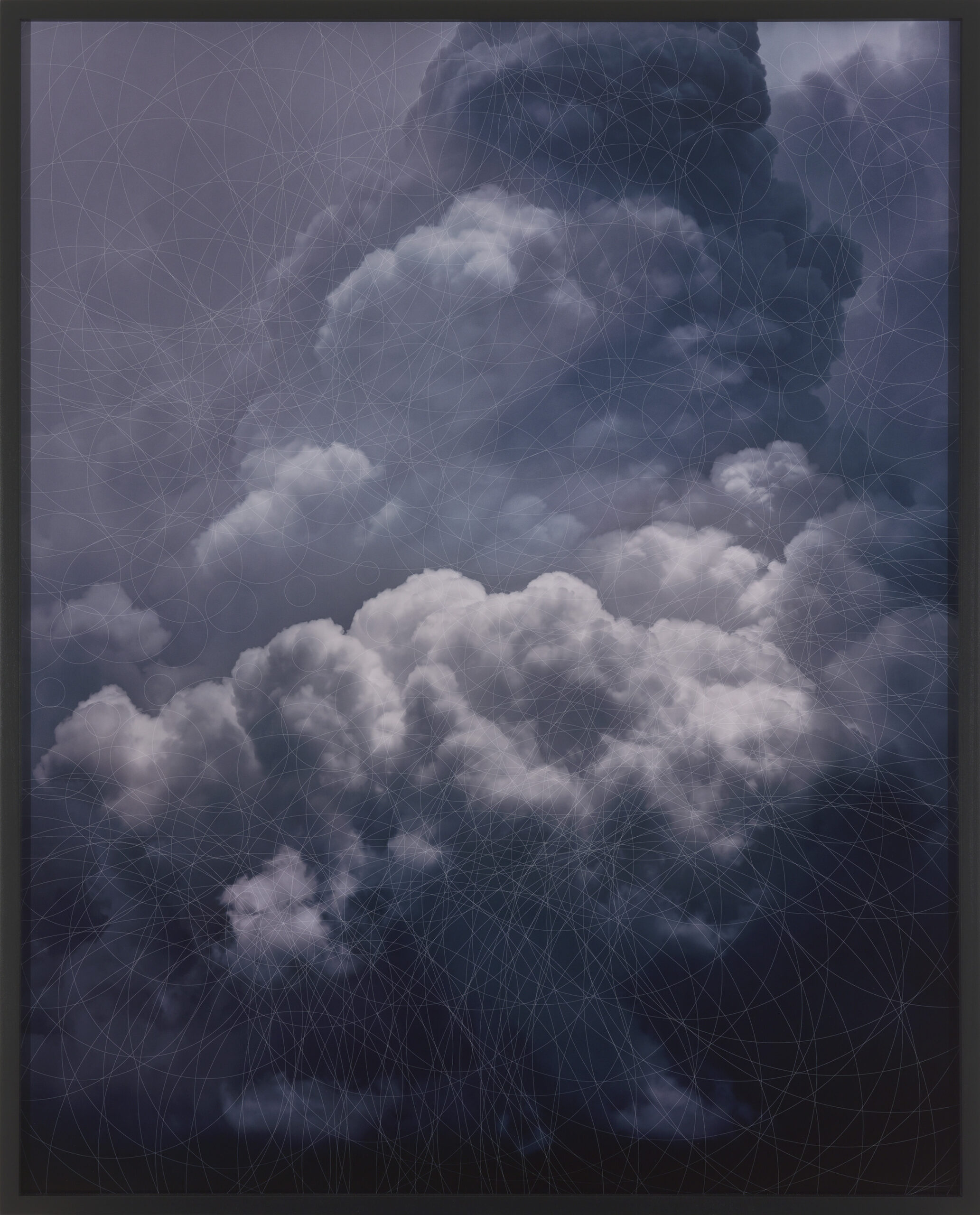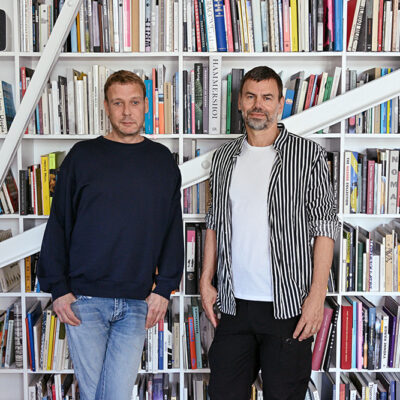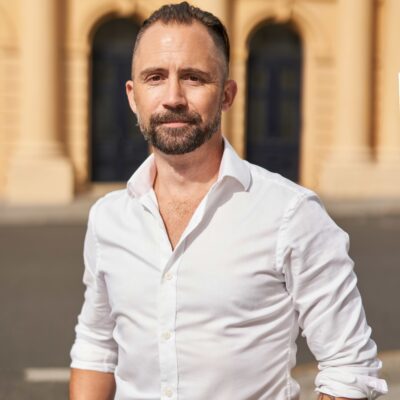Trevor Paglen was born in 1974 in Maryland, and his wide-ranging work includes sculpture, journalism, and engineering as well as image-making. His solo shows include those at the Museum of Contemporary Art San Diego, Frankfurter Kunstverein, and the Eli & Edith Broad Art Museum, among others, and group shows include The Metropolitan Museum of Art, Tate Modern and other institutions.
His work at Pace Gallery investigates the subjects of artificial intelligence (AI) and facial recognition and prompts questions about what this means for us as humans. It asks: how does this software interpret the natural world, such as clouds. What are the boundaries and limits on its capabilities, and how are we seen by the eyes of the computer. And finally, are we, as humans, ultimately replaceable?
Kristen Knupp: Tell me about how you have made this series of images of faces, “They Took the Faces from the Accused and the Dead…”?

Trevor Paglen: These are photographs of people accused of crimes from archival databases. So I ran the faces through software that does facial recognition and then the lines that are drawn on top are some of the results of that software. The software is looking at key points and is trying to find points on the face and measure the distance between the features in order to arrive at an idea of what the proportions of the face are. It’s a more primitive way of doing facial recognition. So that’s what you are seeing here are the lines and numbers from that. The software replaces the face with numbers, in effect.
KK: Is this the same software that the government uses?
TP: What I have in the studio is that we actually wrote a programming language to do computer vision, so we have a tool in the studio where I can say “let’s take these algorithms used in facial recognition or these algorithms used in self-driving cars, or these algorithms used for guided missiles, and put a photo or a video into it and see the image or video through the eyes of a guided missile.” Then I can make a video of what that looks like through the eyes of a guided missile. That’s where the drawing and the lines come from.
KK: Are these the original photographs?
TP: They are the original photographs. I have done retouching and colour-correcting to make them look like something you would want to look at.
We can think about the faces as being the substrate of facial recognition but there are other kinds of training data as well. For any kind of artificial intelligence application there is always training data, which is all the information you are going to analyse and use to make predictions. So one of the big topics in artificial intelligence on the internet is how to tell the difference between things that are spam, and not spam.
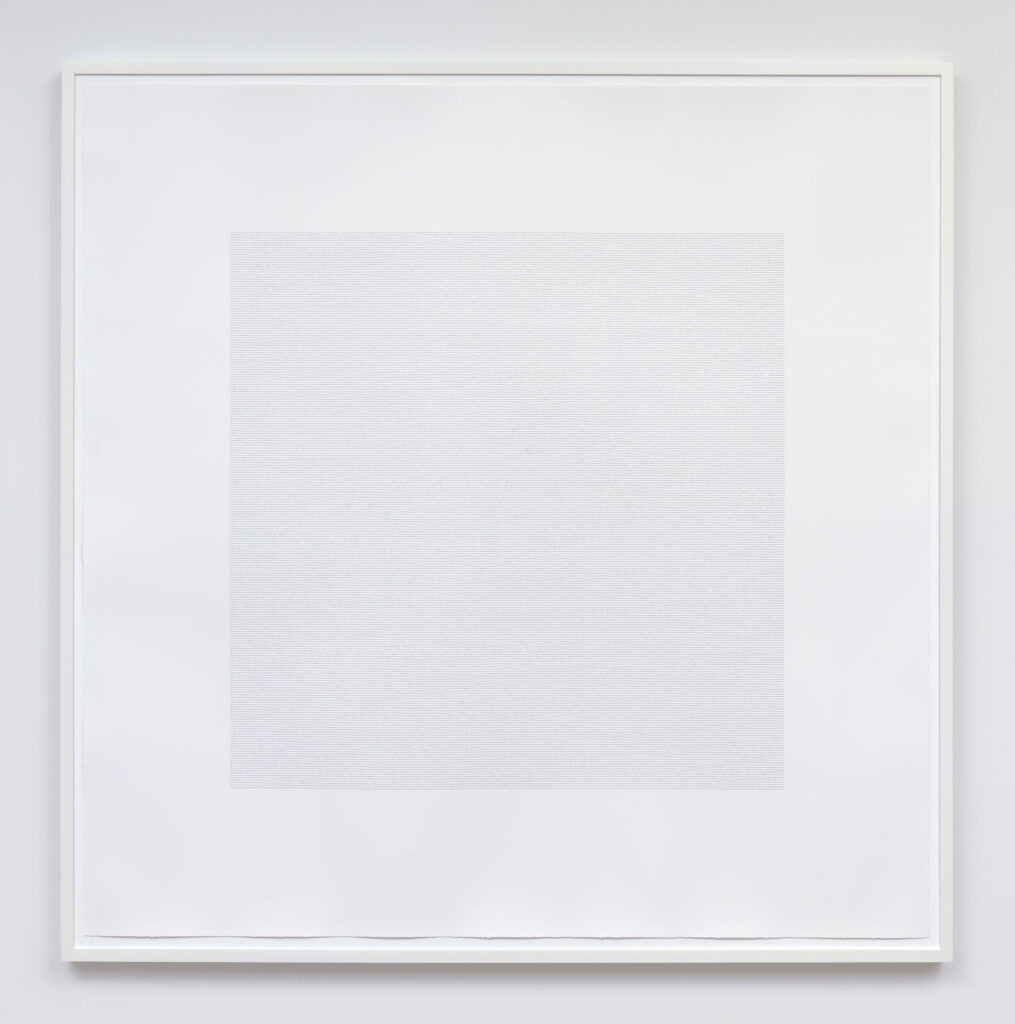
TP: That’s what this piece, “The Spam” 2019, is about. It is thousands and thousands of text messages that are either categorised as being spam or not. So at the beginning of each of these lines it will either say ham which means it is real, or spam which means it is fake. So we are looking at thousands of people’s text messages and the piece is done in a style where, if you see it from afar, it is an abstract shape. That is me thinking about the history of abstraction but also when you look closer at structures that seem cloud-like from a distance you see more detail when close up. The other piece here is called “The Trolls” and it is a training library that is trying to detect whether somebody is being a troll on the internet.
KK: Where did you get the information that you are using in these pieces?
TP: These are all standard data-sets that are used in universities mostly.
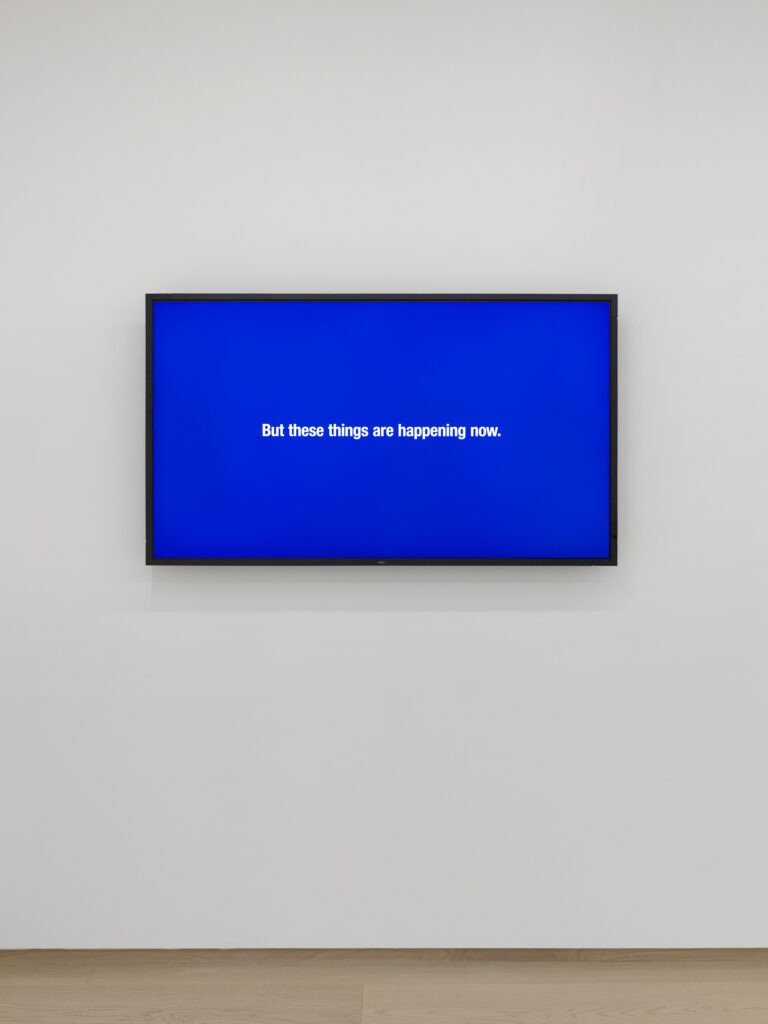
TP: The other training set in this video “The Effect Was Almost Magical” is a training set used for speech recognition. It is texts that show a range of language with the idea that the computer can learn to read based on that. So it is a funny piece that is nonsensical, but as a human, your mind will try to create a narrative when there is actually no narrative there. Ultimately it is the border between abstraction and non-abstraction, and asking the question: what is the shape of this cloud?
KK: Did you order the phrases in a specific way to make them more interesting?
TP: I looked at the training set and edited it as a human to make it more curious and pulled out what I thought what the aesthetic that was lurking in the training set itself.
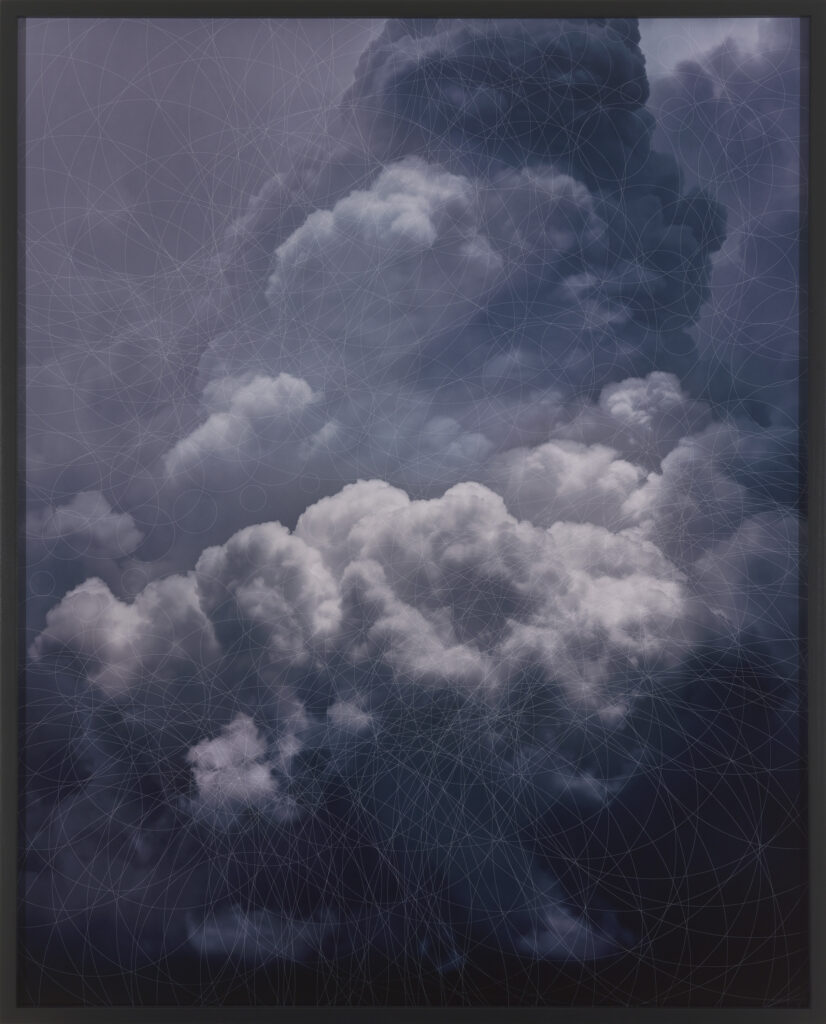
TP: Then these other images of clouds are taking the idea literally looking at the cloud. They are images that have been run through algorithms but when you apply these systems to clouds they are not designed for that so they kind of freak out. So this is one looking for circles, and is a system that would be used in an industrial application, let’s say, if you were making plates. If it did find a circle on the image it would draw a circle.
KK: Do you take an image and then play with different algorithms to see which ones create the most interesting patterns?
TP: Yes, or there are conceptual reasons for using certain algorithms.
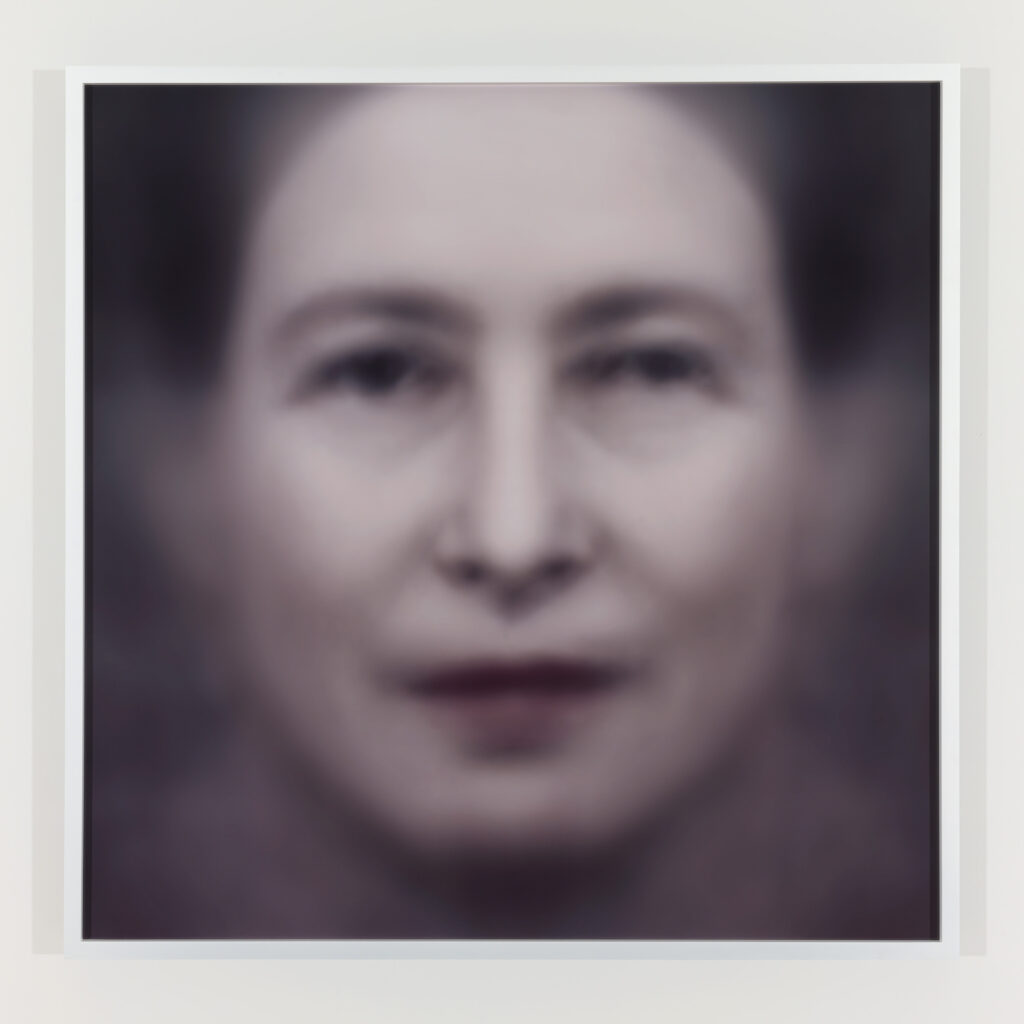
TP: And here is a more complicated piece based on facial recognition. A more advanced way of doing facial recognition is the way Facebook does it. Facebook has the best facial recognition software on the planet. Let’s say you are on Facebook, and there are twenty pictures tagged of you. Facebook puts all those images together to make a composite picture of you. It also makes a composite image of all the other humans, and then subtracts out your composite image, and this equals your signature face that is used to find you on Facebook. So I make an image of that composite image. I have been doing this on portraits of dead philosophers, and poets, and people who may not have been able to exist in a world with facial recognition. So this is a portrait of Simone de Beauvoir.
KK: These are really fascinating, like a ghost of the person. How many of these portraits have you made?
TP: I have one for Franz Ferdinand, Simone Veil, Samuel Beckett, and more, but I don’t know how many have actually made it to become artworks. It takes a lot of images to create them.
Thank you to Trevor Paglen and Pace Gallery, Geneva, for this interview which took place in September, 2019.
To find out more about Trevor Paglen, how he became interested in artificial intelligence, geography and his art listen to this Podcast from The Art Angle.
